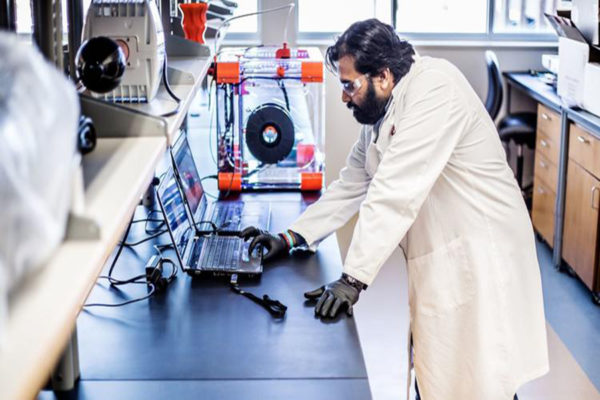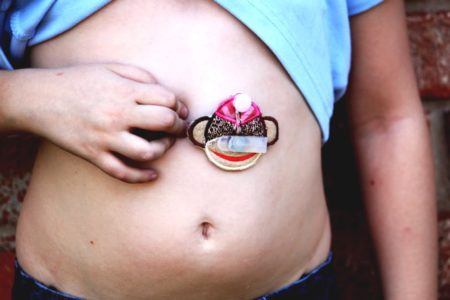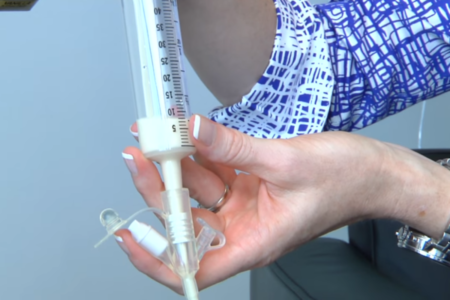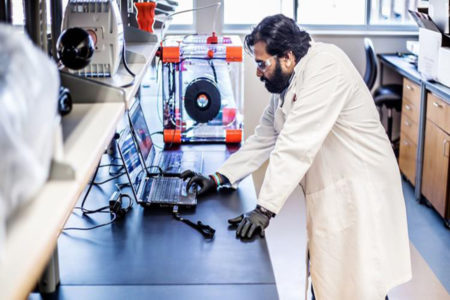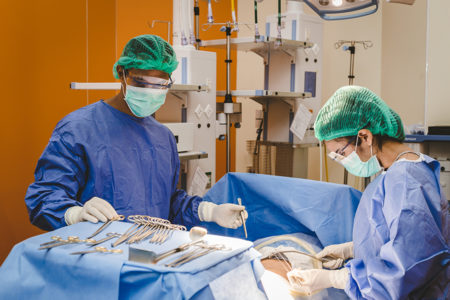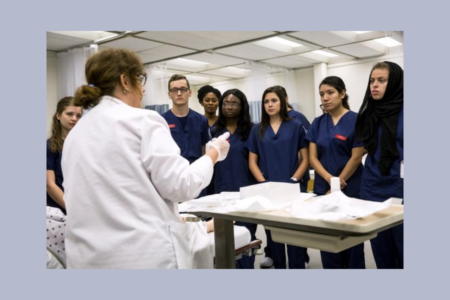Original story by Alexia Elejalde-Ruiz at the Chicago Tribune
Technology has revolutionized most corners of our lives, from how we shop to how we connect with friends.
Now a new medical school in Illinois is poised to train the next generation of doctors to bring the revolution to health care.
The Carle Illinois College of Medicine in Urbana-Champaign, which will welcome its first class of students in July, bills itself as the first medical doctorate program in the nation designed from inception to integrate engineering with medicine. Its hope is to graduate physician innovators who challenge the status quo and find solutions that reduce costs while improving access to and quality of care.
“This group will be the bridge between the people who understand the technology and the people who deliver the health care,” said Dr. King Li, dean of the new medical school. “There are very few people who can cross between these two groups.”
The four-year medical school is a partnership between the University of Illinois at Urbana-Champaign and Carle Health System, which runs a 393-bed regional hospital in Urbana. The hospital has pledged $100 million over 10 years to get the new school off the ground, and the school has raised another $20 million from philanthropic sources, Li said.
The school has received 1,000 applications for the 32 slots in the first class, he said. All students in the first class will get four years of free tuition.
To make way for the new program, the University of Illinois College of Medicine, one of the largest public medical schools in the country with four campuses across the state, is phasing out its Urbana campus, whose last students will graduate in 2022, Li said. The new school is remodeling the existing university medical building to be its main site but it also will have facilities in Carle Foundation Hospital.
The new Carle Illinois College of Medicine will use facilities at Carle Foundation Hospital in Urbana. (University of Illinois)
While other medical schools have engineering or innovation tracks, or offer dual-degree programs, Li said Carle is the first to make technology and engineering principles the foundation of four-year medical education. Each course will be designed by a scientist, a clinical scientist and an engineer.
“This is probably the most exciting opportunity in medical education in the world,” said Li, a radiologist whose resume includes a tenured professorship at Stanford University School of Medicine and five years at the National Institutes of Health. Li, who holds 13 patents, left his position at Wake Forest University, where he was senior associate dean for clinical and translational research and deputy director of its comprehensive cancer center, to take the dean position at Carle in October 2016.
Carle has received preliminary accreditation from the Liaison Committee on Medical Education, which accredits programs that lead to M.D. degrees, and expects to receive approval soon from the Higher Learning Commission, Li said.
The new school aims to recruit students with quantitative backgrounds, such as in math, computer programming, coding and data sciences. It also requires candidates possess “the four Cs:” compassion, competence, curiosity and creativity. The latter two qualities are not typically de rigueur in traditional medical schools, where students are taught to follow a standard of practice, Li said.
The school’s structure and its curriculum are designed to encourage out-of-the-box thinking. For example, every week students will make clinical rounds with both engineering and clinical faculty, and will be tasked with identifying processes that could use improvement. Each student will select one idea for a capstone project and develop a prototype for the innovation.
The vast majority of the faculty will be part-time instructors drawn from 10 colleges across the University of Illinois, including law and fine arts, helping to keep costs down, Li said. Humanities will cut through all of the courses, including instruction on how cultural, environmental and religious differences can affect the perception of care. One project at the medical school is exploring how art displayed in physician waiting rooms can change patients’ moods and outcomes.






